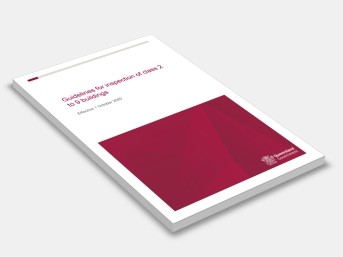Guidelines for inspection of class 2 to 9 buildings (QLD)
Queensland Government
A building certifier is responsible for managing the building approval process with all relevant practitioners. This important role ensures that all the aspects of the building work comply with the building assessment provisions of the BA. Building certifiers are required to undertake sufficient inspections of buildings at the stages stated in the building development approval. In practice, this means that a building certifier is required to take a holistic view of a building rather than just consider a single aspect, such as structural adequacy.
The BR requires mandatory inspections for more simple buildings and structures, such as houses (class 1a buildings) and sheds and garages (class 10 buildings and structures). Guidelines are available for these classes of buildings to assist building certifiers to undertake inspections.
The BR does not provide a similar inspection schedule for class 2 to 9 buildings (which include multi storey residential buildings, office buildings, shops, public halls and commercial and industrial buildings).
These guidelines apply a risk-based approach to the inspection of class 2 to 9 buildings. The guidelines aim to provide practical and effective methods for building certifiers to meet their statutory duties and obligations. A risk matrix, with examples of suggested application to particular buildings, forms part of the guidelines and complements the risk-based approach to inspections.
The size, complexity, and nature of some class 2 to 9 buildings means it is not practical for a building certifier to inspect every element of the building for compliance with the building assessment provisions of the BA.
To ensure best industry practice, building certifiers must consider assuming responsibility for determining and implementing an inspection schedule (i.e. what should be inspected and when) for the various aspects of building work.
An inspection schedule that relies on prescriptive, itemised checklists may not sufficiently address the varying complexities that exist between class 2 to 9 buildings. This could lead to instances where low-risk buildings are over inspected (significantly adding to costs and delays) and high-risk buildings are under inspected (increasing the risk).
A best practice method of inspections of class 2 to 9 buildings should directly address the risk of the building. A risk-based approach allows building certifiers to take an overall view of the safety requirements of a building and establish an inspection schedule.
Scope
Purpose Of These Guidelines
Legal Status Of These Guidelines
Background
A Risk-Based Approach To Inspection Of Class 2 To 9 Buildings
Getting Started
Notification Of Engagement
Consequences Of Not Giving Notice At Completion Of Each Stage
Intended Use And Classification Of The Building
Importance Of Detailed Documentation
On-Site And General Compliance Checking
Managing The Process
Effective Communication
Managing Changes To The Construction Of A Building
Managing Changes To Practitioners Involved In The Building Process
Risk Matrix: A Tool For Establishing A Sufficient Inspection Schedule For Class 2 To 9 Buildings
